cuisine, Couverture rigide (Plus de 72 000 résultats)
Type d'article
- Tous les types d'articles
- Livres (71 779)
- Magazines & Périodiques (203)
- Bandes dessinées (25)
- Partitions de musique
- Art, Affiches et Gravures (4)
- Photographies (11)
- Cartes
-
Manuscrits &
Papiers anciens (18)
Etat
Reliure
- Toutes
- Couverture rigide
- Couverture souple
Particularités
- Edition originale (7 865)
- Signé (1 171)
- Jaquette (11 068)
- Avec images (27 174)
- Sans impression à la demande (70 028)
Livraison gratuite
Pays
Evaluation du vendeur
-
Brevis narratio eorum quae in Florida Americae Provi[n]cia Gallis acciderunt. Anno M.D.LXIII. quae est secunda pars Americae
Edité par Frankfurt: Johannes Wechel for Theodore de Bry, 1591, 1591
Vendeur : Arader Galleries - AraderNYC, New York, NY, Etats-Unis
Livre Edition originale
Hardcover. Etat : Very Good. 1st Edition. Brevis narratio eorum quae in Florida Americae Provi[n]cia Gallis acciderunt. Anno M.D.LXIII. quae est secunda pars Americae.Frankfurt: Johannes Wechel for Theodore de Bry, 1591. Folio (12 3/4 x 9 1/4 in.; 32.5 x 23.5 cm). Engraved title, engraved section title, engraved arms on dedication leaf, half-page engraving on notice to reader, 42 fine half-page engravings after Jacques Le Moyne, each with letterpress titling above and text below, engraved folding map of Florida, woodcut initials, head- and tailpieces. Modern Cambridge-style blind-tooled calf, red morocco lettering piece. CONDITION/BINDING: Engraved title mounted closing several tears (some slightly affecting image), bottom margin of engraved section title cropped, old marginal repair to a1, short tears along bottom margin of ff. 3, 14 and 16, paper flaw in lower right corner of fol. 13, fol. 23 creased, groin of captive on fol. 15 and lap of seated queen on fol. 37 censored in ink, small hole in base of dugout canoe (fol. 42), light marginal dampstaining throughout, gutter of errata leaf (I4) extended. (64V1A) FIRST LATIN EDITION of a seminal illustrated work on early North America, one of the best visual records of Native Americans before the nineteenth century, containing an early landmark map of Florida. John Matthew Baxter describes it as ".the most remarkable and important map, which has been preserved from the sixteenth century maps, of that part of the East coast which lies between Cape Hatteras and Cape Florida.[it is] the first French map to show Florida.[and is] considered the most important map of Florida." Despite its inaccuracies (the northern coastline is notably shown too far east), the map exerted considerable influence on cartographers in the following century. The narrative represents the second part of De Bry's Grand Voyages. In the mid-1560s, the French made four abortive attempts to establish a Huguenot settlement in Florida: the first in 1562 led by Jean Ribault with René Goulaine de Laudonnière second in command; Laudonnière's voyage of 1564; Ribault's second expedition of 1565; and Dominique de Gourgue's 1567 mission to exact revenge on the Spanish. Le Moyne was appointed the artist to accompany the second-and ill-fated-expedition (1564-1565). Le Moyne's extraordinary illustrations examine in detail the rites and customs of the Timucua Indians, with plates devoted to their religious practices, methods of warfare, costume, agriculture, cuisine, architecture, games, marriage ceremonies, and other celebrations. Included is the famous depiction of the Indians hunting while cloaked in the full hides of deer and wrestling with alligators. The final plate depicts the killing of colonist Pierre Gambie, which presaged the doom of the nascent French settlement at Fort Caroline (present day Jacksonville). Seen as a threat by the Spanish to the route of their treasure ships, the French colonists there were ruthlessly massacred in September 1565 by a force led by Pedro Menendez. Miraculously Le Moyne and Laudonnière escaped to safety, arriving at Swansea Bay in November 1565 and Paris in 1566. Their struggles were not publicized until 1586 when L'Histoire notable de la Floride, containing accounts of the first three expeditions based largely on Laudonnière's letters and an unsigned account of De Gourgue's voyage, was published in Paris. Later that year, master engraver and publisher Theodore de Bry met with Le Moyne in an unsuccessful attempt to obtain the illustrations to accompany a new edition of Laudonnière's narrative. After Le Moyne's death in 1589, De Bry purchased the watercolors from his widow and produced the present work. PROVENANCE: W[illiam] MacKinnon, 1st Baronet of Strathaird & Loup (ownership inscription dated 1880). REFERENCES: Alden 591/39; Arents 39; Burden, Mapping of North America 79, Church 145; Cumming & De Vorsey 14; JCB (3) 1:387-88; Streeter 2:1172; cf. Sabin 8784.
-
Couverture rigide. Etat : Très bon. Rare edition originale du livre de gastronomie illustré le plus intéressant de la renaissance par « Le Michel-Ange de la Cuisine » (Oberlé). Simon, Bibliotheca Gastronomica, 1356 ; Graesse, Trésor de Livres rares et précieux, 290 ; Vicaire 771-773 ; Brunet, V, 180-181 ; Mortimer, Italian Books, 467; Wellcome 5811 (pour l?édition datée) ; Oberlé, Les Fastes de Bacchus et de Comus, n°75 (pour l?édition de 1605). Cet ouvrage prodigieux est l??uvre du cuisinier personnel du pape Pie V. Il est dédié à Matteo Barbini, célèbre cuisinier vénitien. C?est le livre de gastronomie italien le plus détaillé du XVIe siècle. Il s?agit de la première des deux éditions imprimées par Michele Tramezzino, l?autre comportant un colophon daté de 1570 et une collation différente. « Aucun chef du XVIe siècle n?a autant contribué au progrès de l?art culinaire que Bartolomeo Scappi. Ann Willan considère qu?il est à la cuisine ce que Michel-Ange fut à la peinture » (Gernon). « Dans le premier livre, Scappi enseigne à son disciple à connaître les bons produits, leur fraicheur, etc. Le deuxième présente la manière de traiter les viandes et volailles en 231 recettes ; le troisième en donne 286 pour accommoder les poissons ; le quatrième livre énumère d?abord ce qu?un cuisinier doit emporter s?il voyage avec un prince, puis les types de menus à servir suivant le calendrier ; le cinquième livre propose 237 sortes de pâtes ; le dernier est consacré aux malades avec 216 façons de potages, soupes, tartes, fruits cuits? Scappi nous apprend qu?il a pratiqué tout cela lorsqu?il était au service du Cardinal Carpi qui fut longtemps malade. C?est le physicien Federigo Donati qui l?aurait encouragé à publier ces recettes dans son ouvrage. A cette époque, seuls les savants se permettaient d?imprimer des traités diététiques. Scappi est certainement le premier cuisinier à l?avoir osé ». (Oberlé). « Scappi?s book is one of the most interesting of the sixteenth-century cookery books. The plates are so attractive that copies containing them all are extremely rare; they represent all kinds of kitchen utensils, kitchen interiors, furniture, fireplaces, etc., whilst a double-page plate represents the various dishes and wines brought by servants to the examiners before being sent in to the Cardinals sitting in Conclave, in 1549? (Simon). ?On le trouve rarement complet et en bon état. Les planches sont tellement intéressantes, dit Simon, que les exemplaires qui les possèdent encore sont devenus très rares? (Oberlé). L?illustration, du plus haut interet, est composée d?un portrait de l?auteur gravé dans un médaillon et de 28 planches extrêmement détaillées représentant des intérieurs de cuisines avec toutes sortes d?aliments en préparation, ainsi qu?une grande variété d?ustensiles et de meubles de cuisine. Deux des gravures, formant une double page, représentent la présentation pour l?inspection du repas qui va être servi aux cardinaux réunis au conclave pour choisir un nouveau pape après la mort de Paul III en 1549. « Les 27 illustrations gravées sur bois présentent les instruments du cuisinier : un appareil de levage pour les grandes marmites, les tamis, râpes à sucre et à noix de muscade, mobiliers divers, cassettes et marmites, instruments pour cuisine en plein air, couteaux, intérieur d?une cuisine, cruches, plats, vases, intérieur d?une laiterie, presses à volaille. Une grande planche montre le banquet servi au Conclave, une autre enseigne à faire la pasta. Au point de vue de l?histoire de l?architecture, le livre de Scappi est sans doute le premier à décrire d?une façon détaillée l?aménagement d?une cuisine ». (Oberlé) Précieux exemplaire de ce livre de la plus grande rareté, du plus haut intérêt pour l?histoire de la gastronomie, bien complet de toutes ses planches en premier tirage.
-
What Mrs. Fisher Knows About Old Southern Cooking, Soups, Pickles, Preserves etc. Awarded Two Medals at the San Francisco Mechanics Institute Fair, 1880, for best Pickles and Sauces and best assortment of Jellies and Preserves
Edité par Women's Co-Operative Printing Office, 420, 424 & 430 Montgomery Street, San Francisco, 1881
Vendeur : Between the Covers-Rare Books, Inc. ABAA, Gloucester City, NJ, Etats-Unis
Edition originale
Hardcover. Etat : Fine. First edition. Octavo. 72pp. Blue cloth stamped in gilt. Nominal rubbing on the cloth, a lovely, fine copy. The second earliest cookbook by an African-American woman (preceded only by Malinda Russell's extraordinarily rare, *Domestic Cook Book,* 1866, which is known in only a single copy); the first California cookbook created by an African-American; and the earliest available book by an African-American exclusively devoted to cooking (two earlier titles: Robert Robert's, 1827 *The House Servant's Directory*, and Tunis Campbell's 1848 *Never Let People Be Left Waiting* were essentially household management books which included recipes but devoted most of their contents to housekeeping and related duties). Additionally, one of the earliest San Francisco cookbooks by a person of any race. Mrs. Fisher was born enslaved in Alabama to an African-American mother and a French father, she later learned plantation cooking in South Carolina. Reportedly she could neither read nor write. She dictated this collection of 160 recipes (including one of the earliest printed recipes for Jumbalaya - here referred to as "Jumberlie") to three men and six women, prominent citizens of San Francisco and Oakland, who helped her to transcribe the book and may have helped underwrite the publication. Of additional interest is the publisher of this book, the Women's Co-Operative Printing Office, one of San Francisco's earliest women-run printing shops. Agnes Peterson founded the Women's Co-Operative Printing Union (WCPU) in 1869, it was later taken over and run by Lizzie G. Richmond, who relocated printing operations permanently to Montgomery Street, where they published a handful of books between 1879 and 1883. The WCPU was an extremely important marker in the history of women printers as it was operated by women and staffed primarily with women. (Levenson, *Women in Printing* 72.) Copies of this title are known in blue, green, red, and brown cloth, with no known or suggested priority. A beautiful copy of a rare and desirable title. *Bitting,* p. 158; *Culinary Americana* 29; *The Jemima Code* p. 21.
-
Le cuisinier roial et bourgeois, Qui apprend à ordonner toute forte de Repas, & la meilleure maniere des Ragoûts les plus à la mode & les plus exquis. Ouvrage tres-utile dans les Familles, & singulierement necessaire à tous Maîtres d'Hôtels, & Ecuîer. - [THE FIRST ALPHEBETIZED COOKBOOK - CONTAINING THE FIRST PRINTED RECIPE FOR CREME BRULÉE]
Vendeur : Lynge & Søn ILAB-ABF, Copenhagen, Danemark
Membre d'association : ILAB
Edition originale
Paris, Charles de Sercy, 1691. Small 8vo. Contemporary full mottled calf with five raised bands to richly gilt spine. All edges of boards gilt. Spine worn, especially at top and bottom, which lack pieces of leather (conserved). Outer hinges worn and weak, so capital bands are showing, but inner hinges are fine and tight. First ab. 10 leaves with a mostly light damp stain. Last 17¤ of leaves with small worm-holes, almost solely marginal, not affecting text, and mostly single holes. All in all internally very nice and clean. [20], 505, [46] pp. Exceedingly scarce first edition of one of the most important cookbooks ever printed, being the first to contain alphabetized recipes. In this masterpiece in the history of cookery, we find the first printed recipe for crème brulee, the first printed recipe for meringue and the first known food recipes to contain chocolate. Furthermore, Massialot?s magnum opus includes the ?Macreuse en ragout au chocolate?, which is possibly the first known Aztec recipe in a European cookbook. ?Massialot, who lived from 1660 to 1733, served as chef de cuisine for various high-ranking Frenchmen, including Philippe I, Duke of Orléans. He?s best known for his ?Nouveau cuisinier royal et bourgeois? In the book he not only laid out recipes for the meals he prepared for royals, but he was also the first to alphabetize recipes, and both meringues and crème brûlée made their first appearances in the book.? (Dan Meyers in The Daily Meal: 10 Chefs Who Changed the Way We Eat). ?Le cuisinier royal et bourgeois? consists of two parts, the first consisting in descriptions of menus for a whole year. Many of these had been prepared at court and both dates and hosts are mentioned in the book. The second part consists in the actual cookbook and constitututes the first cookbook in which the recipes are alphabetically ordered. They are ordered to the chief ingredient and there are often variations for flesh- and fishdays. The book is now worldwide-famous for the invention of crème brulée, for the first recipe of meringue and for the novel recipes containing chocolate: one in a sauce for wigeon or scoter, the other in a sweet custard. Up until then, chocolate had been consumed solely as a drink. Another of Massialot?s innovations presented in the present work is that of adding a glass of white wine to fish stock. The ?Macreuse en ragoût au chocolate? (duck stewed in chocolate)-recipe, which also appears here for the first time and is thought to be the first known Aztec recipe in a European cookbook, was reproduced by Alexandre Dumas in his dictionary of cookery in 1872, where he calls it a ?masterpiece.? Massialot was extremely influential, both in France and abroad. The recipes in the present work were initially intended for nobility, but they eventually made their way to public restaurants founded by former cooks of the court after the French Revolution. The book is one of the key foundation stones for restaurants as we know them today. The work was extremely popular and kept appearing throughout several centuries. A second edition appeared in 1693, a third in 1698, and then it appeared again in 1705 and 1709. In 1712 it was expanded to two volumes and in 1733-34 it was revised and expanded to three. The work was translated into English as early as 1702 as ?The Court and the Country Cook? and had an enormous influence on English cooking as well. François Massialot (1660, in Limoges? 1733, in Paris) served as chef de cuisine (officier de bouche) to various illustrious personages, including Phillipe I, Duke of Orléans, the brother of Louis XIV, and his son Philippe II, Duke of Orléans. In his preface, Massialot describes himself as "a cook who dares to qualify himself royal, and it is not without cause, for the meals which he describes.have all been served at court or in the houses of princes, and of people of the first rank." Serving banquets at places like the Versailles, this can hardly be said to be an overstatement. The first edition of this milestone of cookery is of the utmost scarcity. According to OCLC, merely five copies are located worldwide (two in the US and three in Europe) and not a single copy is traceable at actions. Vicaire: 573 (?Première edition, très rare?).
-
Les vies des evesques et papes de Rome nouvellement traduites de latin en françois
Edité par Geneva, Conrad Badius, 1561
Vendeur : Sokol Books Ltd. ABA ILAB, London, Royaume-Uni
Livre Edition originale
Hardcover. Etat : Fine. 1st Edition. FIRST EDITION thus. 8vo. pp. [lvi], 705, [lxiii]. Roman letter. Title with woodcut printer s device within charming four part grotesque woodcut border, woodcut initials and headpiece, From the Hamilton Palace Beckford Library dispersed in 1882-1883. Bound by the french binder Derome with other bibliographical notes in C19th hand on fly, label of Jean Bonna on pastedown. Tiny closed tear at gutter of title, light age yellowing some minor browning to a few leaves (no worm holes, contrary to the description in Christies and ABPC). A fine copy in stunning French C18th red morocco gilt, probably by Derome le Jeune, covers gilt to an elegant panel design, with gilt, pointillé and floral rules, fleurons gilt to outer corners, flat spine gilt ruled in compartments, fleurons gilt at centres withins ovals and fine pointillé and small tools gilt, edges and inner dentelles gilt, all edges gilt, lower corners fractionally rubbed. A beautiful copy of this rare and most influential translation into French, by the celebrated protestant publisher and author Conrad Bade, in a most elegant French binding. The binding is very much in the late style of Derome le Jeune or his nephew and successor Bradel; see British Library Shelfmark c42c9 and Shelfmark c42c9 for two very similar bindings with his ticket. It is exceptionally skilfully worked in gilt using fine red morocco, and beautifully preserved. Nicolas-Denis (Derome) was born on 1 October 1731 and succeeded his father in 1760. He was the most expensive binder of his time but a skilfull craftsman. He was always in demand and had to be helped by other binders, which explains the differing quality of his bindings. He adopted the à la dentelle decoration. He introduced on his covers the celebrated fer à l oiseau (bird) motif for which he became famous but which he did not invent. British Library. Bale (1495-1563), a former Carmelite monk who converted to protestantism, later bishop of Ossory, was one of the most outspoken English Protestants of the first half of the C16. After the fall of his patron, Thomas Cromwell in 1540, he fled to Germany, where he busied himself in composing the bitter diatribes which earned him the nickname Bilious Bale . On the accession of Edward VI he returned to England to share in the triumph of the reformers and publish in London the works composed in exile. Bale initially wrote this work in Latin and it was first published in Basel in 1558. It was translated into English, with additions by John Studley, as The Pageant of Popes in 1574. The French is the first translation into the vernacular. Conrad Bade is justly recognised as a hugely important publisher just for the publication of his friend Calvin s works but was also a satirical author in his own right. He published his most famous satirical work the Alcoran des Cordeliers in 1556 and followed this with another attack on the abuses of the Church with his Satyres Chrestienes de la Cuisine Papale . The third polemical work which Badius printed was a translation from Bishop John Bales history of the Popes, Acta Pontifcum Romanorum. Its most interesting feature to us is Bale s preface in praise of Geneva as it appeared to him in 1558. In this work, which was produced in 1561, Badius reveals himself as a poet, by his versification of the various rhymes in the original, Like so many who tried their hand at verse in this period, he was never a great poet, yet he was at least spirited and readable which is more than could be said of most of his contemporaries. Lewis Lupton Conrad Badius . A very fine copy of this extremely rare work from William Beckford s library. William Thomas Beckford (1760 1844) extraordinarily wealthy English novelist, art critic, travel writer and politician, now chiefly remembered as the author of the Gothic novel Vathek and builder of the remarkable Fonthill Abbey, the enormous gothic revival country house, largely destroyed. Beckford s fame rests as much upon his eccentric.
-
Nouveau traité de la cuisine, Avec de nouveaux desseins de tables et vingt-quatre menus ; Où l?on apprend ce que l?on doit servir suivant chaque Saison, en gras, en maigre, & en Pâtisserie ; & très-utiles à toutes les personnes qui s?en mêlent, tant pour ordonner, que pour exécuter toutes sortes de nouveaux ragoûts, & des plus à la mode.
Edité par A Paris, chez Paulus-Du-Mesnil, 1739., 1739
Couverture rigide. Etat : Très bon. Very scarce first edition of the first treaty on gastronomy by Menon. Vicaire, 588. This treatise was published anonymously, but the name of the author, Menon, appears in the privilege placed at the end of the first part: on August 26th 1738, Menon gave up this privilege to the widow of Prudhomme who would give it up to Michel-Etienne David and Pauls du Mesnil. The 8 folding plates placed in the first part represent tables set for 24, 16, 50, 30, 14, 18, 20, and 80 place settings. ?No culinary author obtained more re-issues of his works. His works are indisputably those we consult the most?. (Michaud) We know nothing about the life of Menon. ?Marin had created a sophisticated cooking, intended for courteous suppers, for royal receptions, Cécile Eluard says. Menon is going to give a book of practical recipes, easy to execute, and to pursue the effort of simplification begun by Nicolas de Bonnefons in the 17th century. That?s how he became successful ?. He is also the author of two treaties for the practitioners and of an important collection, Les Soupers de la Cour, which owes to the cook Marin a lot, even if Menon does not admit it. Guégan finds Menon?s cooking common; he even picked out some recipes as bad as macaronis having to be cooked in some fat broth during hours, until it thickens and until there is no more liquid! On the other hand, he goes into ecstasies over his recipes of pastries which are among the most remarkable of the 18th century. In the foreword, Menon explains his purpose: ?Butlers will find in the beginning of the first volume Menus for each month of the year; they will learn seasonal stews, and what they have to order; they will find in this Treatise, by means of the alphabetical table, all the stews they wish, the way of making them, and the ingredients they have to give to the cook ?. A beautiful copy preserved in its decorated contemporary calf binding. We could locate only 3 copies among French public Institutions: Grenoble, Aix-en-Provence and Toulouse.
-
Voyage pittoresque en Californie et au Chili; Iles Malouines; - Terres Magellaniques; - Détroit de Magellan; - Terre-de-Feu; - Terre-des-États; - Cap-Horn; etc.; par M. Ch. de Lambertie, auteur de Maïna et d'Hermann. [.]. [Bound with:] Le drame de la Sonora, l'état de Sonora, M. le Comte de Raousset-Boulbon et M. Charles de Pindray, par M. Charles Lambertie, Auteur du Voyage pittoresque en Californie, au Chili, au Mexique, etc. (Oeuvres de M. Lambertie. Histoire et voyages.)
Edité par Chez Ledoyen, Libraire-Éditeur, Galerie d'Orléans, ou chez l'Auteur, a Roumaziéres, prés Chabanais (Charente), Paris, 1855
Edition originale
Both works are first editions (Voyage pittoresque en Californie with the 2-page "Post-face"). In somewhat later hard paper binding, panels covered with blue paste paper. Spine with title vignette. XI [1] 295 [ie. 293] I-II [Post-face] 296-312 p.; 320 p. "One of the most complete accounts of the mining experiences in the first full year of French participation in the gold rush [.]." (Rohrbough, 2013) Together with the first reports about the attempts of the French filibusters, Pindray and Raousset-Boulbon, to establish a colony in Sonora, Mexico. In Voyage pittoresque en Californie, Lambertie describes, among other adventures, the experiences he gained as a gold miner in California at the banks of the Mokelumne River, where he arrived in the summer of 1850. In general Voyage pittoresque en Californie is an "extremely obscure book by an equally obscure author, about whom little is known except the vanity revealed in his preface and 'Miscellanies' here. He claims his book is the first one like it in French about California. Complaining about the dryness of previous accounts, Lambertie tightly wraps himself in the Romantic mantle and promises a narrative rich in emotion and personal reactions. His description of San Francisco concentrates on the contradictions to be found there both in wealth and commerce, but he resolutely believes in the energies and capabilities of the American citizenry. Oddly, he comments that prostitutes seem to have a lot of money and command a good price under the circumstances, apparently just another scarce commodity, like eggs. Though suitably impressed by the opulent gambling establishments and the array of gourmet cuisine, he considers the latter overpriced. Among the unfortunate sights witnessed was the fire of May 3, 1850. He quits the city for the goldfields because of it and travels to Stockton. After a few adventures there, he works a cradle on the Mokelumne River and moves on to another mining camp. His narrative turns to describing Native Americans of the vicinity and then abruptly ceases. This rare narrative deserves more study. We trace four copies in commerce: the Holliday Sale (1954 at $32.50), Scribner's (1956 at $35.00), Palau (noting a copy at 25 francs before 1954), and Chamonal (2003 at $6,000 U.S.)." (Sloan, 2005) Since 2005, only the same, Sloan(-Volkmann) copy appeared in sales according to RBH. The present issue differs in pagination from the Sloan(-Volkmann) copy, and most copies held in institutions. It contains an extra, Roman numbered, 2-page section after the erroneously paginated p. 295 (293), with the subtitle "Post-face", wherein Lambertie thanks the credit for the subscribers, suggesting that the present version preceded the other one. Those without this section, have a different typeset of contents or "Table", and finish on p. 310, whereas this issue on p. 312. We also found such 310-page copies with an extra, often missing title page, dated 1854. Howes U.S. IANA L-42 (with pp. 310); Sabin 38741 (only the 1854 edition). The second work, Le drame de la Sonora is the first report in book format on the French filibustering expeditions into Sonora in the mid-19th century, led by Charles de Pindray (1816-1852) and Gaston de Raousset-Boulbon (1817-1854). After Lambertie left California, he continued his journey to Sonora, Mexico, where Raousset-Boulbon's expeditions were also in progress. Lambertie contacted with Raousset-Boulbon, who at the time was in San Francisco, and suggested the author to ask his brother for further information and documents about his enterprise. The book, according to the foreword, was based upon these papers and facts, besides the contemporary articles found in the French newspapers. Lambertie concludes his work with the description of the local Native American tribes of the Apaches, Guaymas, Seris, Tepocas, Quechans, Pimas, Yumas, Quiquimas, Cocomaricopas, Nijoras, Moquis, and the Papagos, their history, and interactions with the Spaniard, and the missionaries. He also gathered information about Gabriel Ferry, a French writer who lived in Mexico for ten years, and the last chapter covers the French geologist Jules Marcou's 1854 field trip (upon his letters), as part of the Whipple Expedition. An extremely scarce Americana item. WorldCat locates only three copies worldwide (Yale, CT; Indiana University, IN; Staats- und Universitätsbibliothek, Hamburg). Howes U.S. IANA L-41; Sabin 0. Literature: Sloan D. (2015). Auction 15: Fine Collection of Californiana Formed by Daniel G. Volkmann Jr. Lot 118.; Rohrbough M. J. (2013). Rush to Gold: The French and the California Gold Rush 1848-1854 (The Lamar Series in Western History). Yale University Press. Binding rubbed, slightly worn at the extremities, some loss of paste paper on the panels (restored). Pages unevenly trimmed. Water stain to fore-edge. Brown stains to the lower edge. Sporadic foxing and stains throughout. Otherwise in very good condition. In somewhat later hard paper binding, panels covered with blue paste paper. Spine with title vignette Both works are first editions (Voyage pittoresque en Californie with the 2-page "Post-face").
-
L'ECOLE PARFAITE DES OFFICIERS DE BOUCHE
Edité par Chez Jean Ribou
Vendeur : Libreria Anticuaria Marc & Antiques, Sabadell, BCN, Espagne
Encuadernación de tapa dura. Etat : Excelente. París. 1680. 16X10. Pergamino. Cuarta edición corregida i aumentada. 4h+480Pág+14h. La Obra consta de 6 partes: El maître-d'hôstel - Él es el supervisor de la cocina y "la cocina fría": el personal, el equipo, la compra de bienes y productos alimenticios, así como la organización de las comidas pertenecen a sus tareas. Esto significa que la planificación de los menús, la colocación y la decoración de la mesa, servir los platos y asegurándose de que los comedores tienen las manos limpias. El maître-d'hôtel es de hecho el amo de la casa, todas las personas que se describen a continuación respuesta a él. Le Grand Ecuyer-Tranchant- Esta parte enseña cómo tallar y servir todo tipo de aves de corral, carne, pescado, caza y algo de fruta. Está ilustrado con grabados para que sea más completo. El sommelier Royal - Es el responsable de poner la mesa (con cuchillos y cucharas, no se hace mención del tenedor), doblar las servilletas en apelar formas, organizar el buffet, y asegurarse el vino se sirve frío. Le Confiturier Royal- Supervisa la cocina, "la cocina fría". Aquí es donde los platos para el último supuesto, el postre, se preparan: fruta, confites, golosinas. Los capítulos de esta parte muestran las muy diversas tareas de "la cocina fría": compotas preparación, pasta de frutas, mermeladas, galletas, mazapán, conservas secas, conservas húmedas, jaleas y preparaciones más secas, cremas, jarabes, aguas destiladas y vinos especiados y cómo hacer que el hielo, la preparación de té, chocolate y café, ratafía, perfumes, velas fragantes, el polvo del pelo y lavar el cabello, el maquillaje para la piel y los labios (pomadas). El d'office cocinero parece ser una combinación de una peluquería, farmacia, barman, vendedor de helados y repostería, todo en una sola persona. Le Cuisinier Royal- Esta sección presenta las recetas de cocina reales, con la temporada apropiada y el lugar en el menú para todo tipo de carnes, pescados y verduras, tanto en los días de carne ( en gras ) y en los días de pescado ( en maigre ). Le Patissier Royal - La última parte con los alimentos al horno, especialmente los platos salados que se sirven durante la primera o plato principal. Comienza con recetas de masa dulce y salado, seguido de recetas para empanadas y tartas frías y calientes, ya sea con carne o pescado o con verduras o frutos secos y pastelería frita (buñuelos y choux). El último capítulo ofrece sugerencias de manjares, durante el cual se sirven carne y postre simultáneamente. Raríssima edición ilustrada y muy difícil en comercio. Ref 8.4 Biblioteca A. Language: eng.
-
Les Diners de Gala [The Dali Cookbook]
Edité par Felicie, New York, 1973
Vendeur : Manhattan Rare Book Company, ABAA, ILAB, New York, NY, Etats-Unis
Edition originale Signé
Etat : Very Good. Etat de la jaquette : Very Good. 1st Edition. FIRST EDITION IN ENGLISH, WITH MAGNIFICENT PRESENTATION INSCRIPTIONS, DRAWINGS, AND "PAPER SCULPTURE" BY DALI. On the inscription and drawings: Dali lavishly decorated the endpapers of this copy, writing in thick black marker (and taking up over half the page): "Pour MR Riskin / Hommage / Dali." Beneath his inscription, he dated it (1974) and drew what looks to be a large version of one of his spinning men. Dali scraped the paper at the base of one of the figure's arms to create something resembling a hand. On the facing page, Dali created something even more unusual: He drew a bug, but molded and scraped the paper to create a three-dimensional exoskeleton for the creature. Finally, on the page facing the title page, Dali added another inscription: "with apologies for the translation / Dali / 1974". The book: "Les Diners de Gala, the opulent cookbook that [Dali] conceived and illustrated, sets out a surrealist gastro-aesthetics that is at once visceral and ascetic, Dionysian and Catholic. [It] showcases Dali's ornamentation of menus from such legendary restaurants as Maxim's and La Tour d'Argent and features the recipes of their chefs. Dali stages himself within the sumptuous culinary mise-en-scene. Les Diners de Gala moves between 'sado-masochistic pleasure', 'acute sybaritism', Rabelaisian scatology, religious ecstasy, and anaesthetic asceticism." (Richard Gough, On Cooking). With 136 recipes in 12 categories: exotic dishes; eggs & sea food; first course; meats; snails & frogs; fish & shell fish; game & poultry; pork; vegetables; aphrodisiacs; desserts; hors-d' oeuvre. The book is stunningly illustrated throughout with surrealistic full-color images of food, figures, and wild scenes sprung from Dali's imagination. Provenance: The recipient, Martin Riskin, was an influential member of the New York art scene, serving as the banquet director at the St. Regis Hotel during the 1960s and '70s (an appropriate association for this book), where he befriended Salvador Dalí and also held hospitality positions at The Plaza, The Pierre and The Waldorf-Astoria. He was culturally diverse, serving as a founder of the New York Youth Symphony, the Puccini Foundation and the World of Musicians, and as a board member of the American Symphony Orchestra. Through his activity in contemporary art circles he was friends with Miró and Chagall (among others) as well as Dalí. Translated by Captain J. Peter Moore. New York: Felicie, 1973. Quarto, original cloth, original illustrated foil dust jacket. A few superficial scratches to dust jacket, otherwise fine. One of the most interesting presentation copies of a Dali book we've handled. Original cloth, original dust jacket.
-
[TRAVEL] [MANUSCRIPT] : A Tour Through Denmark, Sweden, Finland, to Petersburg from there through Prussia, Brunswick, Hanover and Holland in the Summer of 1835
Vendeur : Cleveland Book Company, ABAA, Rocky River, OH, Etats-Unis
Hardcover. Etat : Very good +. Octavo. Figured cloth with leather spine label ("Tour in the North of Europe 1835"). 233 closely and neatly written pages, mostly written on one side of each leaf (although it varies between recto and verso), bound with nicely engraved letterheads and illustrations of the various locales visited and described, some are hand colored, also with a folding hand-colored map of Denmark published by Thomas Kelly in London, 1834 (see below). All illustrations on unnumbered pages. Modest wear to the spine label, text block fallen slightly forward, front hinge thinly cracked, still a nice, very good or better volume, with the interior fine. Authorial Signature of Capt. Kelly dated January 1835. Kelly, about whom we could find little, traveled with "my usual traveling companion Alderman Kelly" on the John Bull Steam Packet to Hamburg. This is followed by a detailed description of their activities and each of the many localities they visited, with exceptionally detailed remarks on travel, the geography, architecture, population, the paintings and other art displayed in the churches, palaces, and museums, the hotels and their cuisine, or lack of it, weather, observations and entertainments of the various British consuls. Capt. Kelly's companion, born Thomas Kelly (1772-1855), was according to at least one source, "a Dick Whittington character," a man who had risen from modest beginnings to be Lord Mayor and a respected Alderman. After his father's bankruptcy, in about 1788, Kelly was sent to work at Hoggs, the publisher and bookseller, on Paternoster Row after which he became a noted printer and publisher, and as mentioned was Lord Mayor of London in 1836. The map of Denmark in the book was published by Kelly.
-
Primitive Carvings of Wooden Fruit, Vegetables, and Groceries made by the Delta Art Center, W.P.A. Mississippi Art Project
Edité par Mississippi, 1935
Vendeur : Between the Covers-Rare Books, Inc. ABAA, Gloucester City, NJ, Etats-Unis
Hardcover. Etat : Very Good. 20 hand carved food items including a milk bottle, an orange, a carrot, three eggs, a banana, a potato, a ham, a tomato, a jar of peanut butter, a bag of sugar, a tomato can, a wedge of cheese, a jar of molasses, a pound of butter, a pound of lard, and a loaf of bread with two slices carved from the loaf, with a supplied basket. Some rubbing and wear on the paint, overall very good. Of the 20 pieces, nine are stamped "Delta Art Center, W.P.A. Miss. Art Project," but they are all obviously of a piece. Wonderful hand-carved and painted vernacular representations of groceries, presumably much on the minds of the Depression-era artists and craftspeople. Speculation in our office is rampant about the uses to which these objects could be put, some of it not facetious.
-
[Manuscript]: A Tour Through Denmark, Sweden, Finland, to Petersburg from there through Prussia, Brunswick, Hanover and Holland in the Summer of 1835
Date d'édition : 1935
Vendeur : Between the Covers-Rare Books, Inc. ABAA, Gloucester City, NJ, Etats-Unis
Hardcover. Etat : Near Fine. Octavo. Figured cloth with leather spine label ("Tour in the North of Europe 1835"). 233 closely and neatly written pages, mostly written on one side of each leaf (although it varies between rectos and versos), bound with nicely engraved letterheads and illustrations of the various locales visited and described, some are hand colored, also with a folding hand-colored map of Denmark published by Thomas Kelly in London, 1834. All illustrations on unnumbered pages. Modest wear at the spine label, text block fallen slightly forward, and hinges partially split, still a nice, very good or better volume, with the interior fine. Authorial Signature of Capt. Kelly dated January 1835. Kelly, about whom we could find little, traveled with "my usual traveling companion Alderman Kelly" on the John Bull Steam Packet to Hamburg. This is followed by a thorough description of their activities and of each of the many localities they visited, with exceptionally detailed remarks on travel, the geography, architecture, population, the paintings and other art displayed in the churches, palaces, and museums, the hotels and their cuisine (or lack of it), weather, observations, and entertainments by the various British consuls. Capt. Kelly's companion, born Thomas Kelly (1772-1855), was according to at least one source, "a Dick Whittington character," a man who had risen from modest beginnings to be Lord Mayor of London and a respected Alderman. After his father's bankruptcy in about 1788, Kelly was sent to work at Hoggs, the publisher and bookseller, on Paternoster Row after which he became a noted printer and publisher. He became Lord Mayor of London in 1836, the year following the trip described in this diary, with his official mayoral portrait painted by Mary Martha Pearson in 1837. A lovely travel diary filled with rich details and personal anecdotes.
-
Opera di M. Bartolomeo Scappi, cuoco secreto di Papa Pio Quinto divisa in sei libri [bound with] Il Trinciante
Edité par (M. Tramezzino), Venice, 1570
Vendeur : Pazzo Books, Boston, MA, Etats-Unis
Edition originale
Hardcover (Vellum). Etat : Good Condition. First Edition. Later but old half vellum over marbled boards, a touch of worming to vellum at edges. Rebound early on with Il Trinciante and with a few leaves moved and missing. With the frontis portrait before the title and the plates moved to the end of the volume, lacking leaf A1, 17 (of 27) plates and the folding plate of knifes and forks in Il Trinciante (but with the plate of tongs, fork and birds on B2). scattered light foxing and browning, old note to title, degradation to edges of final Il Trinciante leaf. Plates with some finger soiling, tiny tears in the margins, light foxing. (4),368 (of 369),(7) lvs; (4), 44 leaves. The 10 present plates depict: table, ladder, broom etc; dairy kitchen; 15 cooking pots; conclave chamber items (2 plates; different vessels and hot vessels; "bell" kitchen; litter, incense burner etc; 2 plates of traveling kitchen accessories. Vicaire 77 , Cagle 1182, Oberle 75 (the 1605 ed.), Bitting 419 (though with a few different paginations for the 1570 edition) A largely complete first edition (though priority has proved hard to establish between the 1570 editions) of the greatest cookery treatise of the Renaissance. Not until La Varenne's Cuisinier Française in 1651 would a work of even roughly comparable culinary importance be published (and that is ignoringf the remarkable engravings - including the first fork ever pictured ). Scappi describes the method and implements of a new sort of cookery. Though sprung from and describing elaborate banquets of mind-boggling complexity (one banquet that he describes has 159 dishes), the individual recipes were suitable for middle class tables, and remain fully recognizable as staples of Mediterranean cuisine. Il Trinciante is likewise a first edition and represents the most important and influential Renaissance treatise on carving. It was often bound with later editions of Scappi's Opera. Size: 4to (quarto). Quantity Available: 1. Shipped Weight: 1-2 kilos. Category: Cooking, Wine & Dining; Inventory No: CAT000880.
-
Les Diners de Gala.
Edité par Felicie, Inc. Publishers, New York, 1973
Vendeur : Raptis Rare Books, Palm Beach, FL, Etats-Unis
Edition originale Signé
First edition of this extravagant, lavishly illustrated cookbook created by Dalà in honor of his wife, Gala. Quarto, original color-printed pictorial cloth, pictorial endpapers, illustrated throughout. Translated by Captain J. Peter Moore. Association copy, inscribed by Salvador Dali with a double-page inscription and drawing on the copyright page and opposite page, "For Jean Vergnes 1976 Le oen de la Cuisine Dali." Dali has added an original portrait of Vergnes and a dripping spoon. With an additional presentation card inscribed by famed American restaurant critic Gael Greene laid in on Greene's custom stationary, "To Jean Vergnes with love from his great admirer Gael Greene 1-27-76." The recipient, Jean Vergnes, was a classically trained and highly acclaimed French chef, best-known as the co-founder of the famed Manhattan eatery Le Cirque, which opened in 1974. Vergnes had a major influence on American restaurant culture for more than four decades. He began his career working as a chef at various top restaurants in Paris during World War II, with a brief stop in Bermuda before moving to the United States in 1950. Classically trained in the French tradition, he was soon working in the kitchen of the Waldorf-Astoria, then as the youngest executive chef of the legendary Colony Restaurant, and finally as co-founder of Le Cirque, one of the most dazzling culinary jewels of New York since its opening in 1974. From 1986 to 1992, Daniel Boulud was executive chef of Le Cirque and in 1995, it was awarded the James Beard Foundation Award for Outstanding Restaurant. From the library of Jean Vergnes and thence by descent. Near fine in the original decorative stiff paper dust jacket which is in near fine condition. â When six years old I wanted to be a cook.â At age 68, Dalà fulfilled that ambition in this book. His careful selection of menus and recipes, â with its precepts and its illustrations, is uniquely devoted to the pleasures of Taste. Donâ t look for dietetic formulas here. We intend to ignore those charts and tables in which chemistry takes the place of gastronomy. If you are a disciple of one of those calorie-counters who turn the joys of eating into a form of punishment, close this book at once; it is too lively, too aggressive and far too impertinent for you.â With color plates and in-text photographs and illustrations on nearly every one of the 322 pages. The colophon reads, â The divine Salvador Domenech Philippe Hyacinthe Dalà conceived and materialized this work dedicated to Gala. All the recipes in this cook book, never before published, have been elaborated with great precision by a â chefâ wishing to remain in the most secret anonymity.â Gala was DalÃâ s wife and muse.
-
Gulf City Cook Book [Cookbook] [FIRST APPEARANCE OF JAMBALAYA]
Edité par United Brethren Publishing House, Dayton, Ohio, 1878
Vendeur : Babylon Revisited Rare Books, Northampton, MA, Etats-Unis
Edition originale
First Edition. Octavo, original blue cloth lettered in gilt and with black border lines. Compiled by the ladies of the St. Francis Street Methodist Episcopal Church, South, Mobile, Alabam. Very scarce, important early cookbook with the first appearance of recipe for Jambalaya (here called Jam Bolaya). Much Creole cuisine, preceding the New Orleans Creole cookery books. Spine ends chipped, front corners bumped, front hinge starting. Very Good overall.
-
Modernist cuisine. the art and science of cooking
Edité par PHAIDON EDICIONES, 2011
ISBN 10 : 0982761007ISBN 13 : 9780982761007
Vendeur : Iridium_Books, DH, SE, Espagne
Livre
Etat : Muy Bueno / Very Good.
-
Food In England.
Edité par Macdonald, London, 1954
Vendeur : Raptis Rare Books, Palm Beach, FL, Etats-Unis
Edition originale Signé
First edition of this classic work by the social historian Dorothy Hartley, which is both a cookery book and a history of English cuisine. Octavo, original cloth, illustrated with Hartley's own strong, detailed and lively illustrations. Lengthily signed by the author on the front free endpaper, "D. Hartley. the author- with remembrances of our meetings-at the National!" Near fine in a very good price-clipped dust jacket. Exceptionally rare signed, we trace no other examples. First published in 1954 and the bible of English cooks ever since, Dorothy Hartley's Food in England has remained a classic. Her love of the infinite variety of English cooking and her knowledge of British culture and history show why our food should never be considered dull or limited. There are unusual dishes such as the Cornish Onion and Apple Pie, and even recipes for fungi, from common field mushrooms to puffballs. She describes some delicious puddings, cakes and breads, including an exotic violet flower ice cream, an eighteenth century coconut bread and Yorkshire teacakes. The finely-executed line drawings that accompany many of the recipes are more than just beautiful; they inform the cook about different varieties and techniques of food-handling. Hailed by Lucy Worsley as "a curious mixture of cookery, history, anthropology, folklore and even magic.".
-
Ein KOCH- und ARTZNEY - BUCH.
Edité par Gratz, Widmanstetter Erben, 1688., 1688
Vendeur : Antiquariat Kochkunst Bibliothek, Davos Platz, Suisse
Edition originale
Gratz, Widmanstetter Erben, 1688. 8°. Mit Holzschnitt - Titelbordüre und Vignette. 1 Bl., 236 S., 7 Bll. Roter Ldr. d. Zt. mit schönen Goldornamenten auf Rücken- und Deckel (leicht berieben und bestoßen). Weiss 1982; Notacker 744.2 - Zweite Ausgabe. "Erziehlte auf der Auktion Crahan die astronomische Summe von sFr. 25000". Die Erstausgabe erschien identisch 1686, die 3. Ausgabe als ebenda 1696. (Weiss) Ältestes gedrucktes Grazer Kochbuch. Wahrscheinlich ältestes Österreichs. Der "freiwillig aufgesprungene Granatapfel" von Eleonora Liechtenstein hat seine Kochrezepte größtenteils aus dem Koch- und Artzney-Buch übernommen (ohne Quellenangabe). Mit über 150 Rezepten: Von allerley Zuckerwerck: Die drey Pfannen-Krapffen; Von allerley Fleisch-Speisen: Wie man die Hammen selcht; Von allerley Suppen: Suppen mit kleinen Vögelein, Ein Süppel über braten Kapaun und Rebhühner; Allerley Milch: Reiß-Milch zu machen; Allerley Pasteten; Artzney-Buch: Ein gutes Augen-Wasser, wann die Augen weh thun, Ein gutes Wasser für die Blaichsucht etc. - Tlw. etwas braunfleckig. Stellenweise Wurmgänge im Bug und an den unteren Rändern ohne Buchstabenverlust. Gesuchtes Exemplar. Sprache: deutsch;.
-
Bibliothecae Americanae Primordia : an attempt towards laying the foundation of an American library, in several books, papers, and writings, humbly given to the Society for the propagation of the Gospel in foreign parts, for the perpetual use and benefit of their members, their missionaries, friends, correspondents, and others concern'd in the good design of planting and promoting Christianity within Her Majesties colonies and plantations in the West-Indies
Edité par J. Churchill, London, 1714
Vendeur : Antipodean Books, Maps & Prints, ABAA, Garrison, NY, Etats-Unis
Edition originale Signé
Hardcover. First edition. An interesting association copy of this book, considered the earliest catalogue of books devoted to the entire American continent, the first owner being Achille-Guillaume Le Begue de Presle (1735-1807), friend of Rousseau's, and prolific writer in the fields of medicine, health, natural history & cuisine. Signed "A.G. Lebegue de Presle" on title page. Starting in 1759, he wrote for 30 years, including "Dictionnaire Portatif de Cuisine." 1767; Relation des derniers jours de M.H.H. Rousseau, 1779; and numerous other medical works on nervous maladies, poisonous insects, the use of mercury, treatment of disease amongst soldiers and the flora of Paris. Bishop White Kennett (1660-1728), an original member of the Society for the Propagation of the Gospel in Foreign Parts, was also an antiquary and book collector. This work records his library of just over 1,200 books, ephemera and manuscripts, arranged chronologically. Although this is regarded as the earliest catalogue devoted to the entire American continent, particularly New England, there is an exception. "This is Antonio Rodriguez de Leon Pinelo's "Epitome de la biblioteca Oriental i Occidental, Nautica i Geografica (Madrid, Juan Gonzalez, 1629). The Epitome, in the section devoted to "Biblioteca Occidental," is essentially Spanish and Portuguese American, while the Kennett catalogue is devoted to publications of his 'own Countrymen'. Thus, the two works complement one another". See Frederick Goff's introduction in "The Primordia of Bishop White Kennett, the First English Bibliography on America" (Washington, DC: Pan American Union, 1959). OCLC: 80340265 cites 8 libraries, irregular paging and only 250 copies printed. 8vo, xvi, iii, 3-275; An Index of the Matters, Persons and Places contain'd in the preceding Catalogue, 112 lea. "No. 125-132 (sig. Ll-Mm) repeated. Index (pages not numbered) sig. Cccc-Mmmmmm in two .An addition of some other books and papers humbly given to the Society ." and "Index," by Robert Watts./ The dedication is dated Oct. 20, 1713, but the Advertisement has date Nov. 1, 1714, and the "addition" contains entries of books published in 1714./ The entries are arranged chronologically by date of publication; "extracts" from Purchas and Hakluyt are entered under date of voyage described." (OCLC). Nicely rebound in full brown half calf, red & gilt title labels. A small ex-lib stamp on the title page for "Ecole Sainte Genevieve". Text block clean but some quires quite browned on Bbbb to Cccc (4pp); Gggg to Qqqq (36pp); Rrrr to Uuuu (12pp). Sabin 37447; Breslauer & Folter 93. Overall, an good copy of a rare book.
-
Le cuisinier anglais universel, ou le nec plus ultra de la gourmandise
Edité par Tardieu, 1810
Livre Edition originale
Couverture rigide. - Tardieu, Paris 1810, 13,5x22cm, 2 volumes reliés. - | Le seul ouvrage de cuisine étranger traduit en français au XIXe siècle | Rare édition originale de la traduction française. Ouvrage illustré de 2 frontispices et 12 planches numérotées reliées en fin du second volume. Petit manque au coin supérieur droit et une restauration marginale de la page de faux-titre du premier volume. Quelques rares rousseurs sans gravité, une auréole claire en marge droite de chacune de 12 gravures en fin du second volume. Reliures en demi maroquin de Russie rouge, dos lisses ornés d'arabesques romantiques dorées, plats de papier marbré, accrocs et frottements sur les plats et les coupes, coins émoussés. Le livre parut sous le titre The Universal Cook à Londres en 1792 ; sa quatrième édition est traduite en français et publiée en 1810. Le cuisinier Universel est l' uvre de deux célèbres chefs Francis Collingwood et John Woollams ayant officié dans les établissements les plus réputés du Strand de Londres : la London Tavern et The Crown and Anchor, connus pour servir les parlementaires du Whig-club. Cet ouvrage compte parmi les rares exemples d'incursions de la cuisine britannique dans la culture gastronomique française qui exercera encore longtemps une hégémonie quasiment incontestée. Sa publication était considérée comme une curiosité dans le milieu culinaire français, comme l'indique la préface de l'éditeur ; elle également vue comme une véritable prise de risque selon le grand bibliographe Oberlé : « Admirons le courage de l'éditeur Tardieu, qui, en 1810, à une époque où nous n'avions pas d'ennemis plus détestés que les Anglais, osa faire traduire un livre chantant les fastes culinaires de la perfide Albion ». Cette rare publication répondait cependant à une demande d'un public de gastronomes anglophiles : il n'est pas anodin que l'un des premiers restaurants de luxe parisiens ait été baptisé La Grande Taverne de Londres en raison du renom attaché, dès la fin du XVIIIe siècle, à la restauration telle qu'elle était pratiquée en Angleterre, et pour les plats que l'on y servait. L'ouvrage arrive en effet dans le contexte d'une France post-révolutionnaire, où la cuisine sort du milieu aristocratique. Les anciens cuisiniers au service de nobles désormais émigrés ouvrent des restaurants, où ils développent, à l'image de leurs confrères anglais, une véritable « science culinaire ». Les recettes qui le composent illustrent les changements dans la culture culinaire anglaise au tournant du XIXe siècle. La hiérarchie du prestige, tenue jusqu'alors par la cuisine française avec ses rôts et potages, cède la place aux puddings et aux tartes. On recense seulement quatorze préparations « à la française » : fricandeau, canard, mauviettes, sole, turbot, biscuits, « selle de mouton [pullets] à la Saint-Menehould », « soupe lorraine ». La ville de Londres a remplacé la cour comme centre et moteur, et ses chefs cuisiniers donnent désormais le ton. Une très rare apparition de la cuisine anglaise dans la gastronomie française, durant une période d'intenses hostilités entre les deux pays sous l'Empire. [ENGLISH TRANSLATION FOLLOWS] | An English celebrity-chef cook-book, the only "foreign" ever translated into French in the 19th-C | Le cuisinier anglais universel, ou le nec plus ultra de la gourmandise [The Universal Cook], Tardieu | Paris 1810 | 13,5 x 22 cm | 2 volumes bound in half morocco Rare first French edition. 2 frontispieces and 12 numbered engravings bound at rear of the second volume. Small lack of paper to upper right corner and marginal restoration to the first volume's title page. Minor foxing, a light halo to the right margin of each of the 12 engravings at rear of the second volume. Red half morocco binding, smooth spines with arabesques motifs in gilt, marbled paper boards, snags and rubbing to boards and edges, corners bent. The book was first published as The Universal Cook in London in 1792; its fourth edition was translated into French.
-
Ichtyophagia, sive de piscium esu commentarius.
Edition originale Signé
Antverpiae [Anvers / Antwerpen], apud Petrum & Joannem Belleros [Beller], 1616. Un vol. au format in-12 (171 x 106 mm) de 8 ff. n.fol., 176 pp. et 8 ff. n.fol. Reliure de plein veau moucheté blond, filet vertical à froid porté sur les plats, dos à nerfs ornés de filets gras à froid, doubles caissons d'encadremetn dorés, roulettes dorées, larges fleurons dorés, pièce de titre de maroquin havane, titre doré, palette dorée en tête et queue, toutes tranches mouchetées. Edition originale très rare et seule connue. Impression anversoise. ''Cet ouvrage très rare sur le poisson dans l'alimentation constitue l'historique de ce type de nourriture chez les anciens Grecs, Egyptiens, Syriens, Romains. Rites sacrés touchant les poissons, commerce, vente sur les marchés, crieurs ; l'excellence de la chair de poisson pour les vieillards, les malades et les gens faibles ; la façon de les accommoder, etc. Après la dédicace se trouve la nomenclature (en latin, grec, flamand et français) des poissons et crustacés : l'anguille, le merlan, l'écrevisse de mer, le crabe, la carpe, le congre, l'anchois, la lamproie, le brochet, le barbeau, le mulet, la murène, l'huître, la coquille Saint-Jacques, le turbot, le saumon, le maquereau, la sardine, l'esturgeon, la sole, la truite, etc.'' (in Oberlé). ''Médecin d'origine portugaise qui vivait à Anvers, Luis Nunez voyagea beaucoup en Italie. Il s'est particulièrement intéressé à la diététique et traite ici des poissons du point de vue de leur intérêt nutritionnel et gastronomique.'' Oberlé, Les Fastes de Bacchus et Comus, 764 - Vicaire, Bibliographie gastronomique, 626 - Graesse IV, Trésor de livres rares et précieux, p. 685 - Brunet IV, Manuel du libraire et de l'amateur de livres, 100 - Dictionnaire bibliographique, historique et critique des livres rares, p. 303. Coiffes arasées. Ors du dos ternis. Petit manque affectant la pièce de titre. Rares rousseurs dans le texte. Nonobstant, bel ensemble.
-
Le Guide culinaire. Aide-mémoire de cuisine pratique.
Edité par Paris, Ernest Flammarion, [1921]., 1921
Vendeur : Antiquariat INLIBRIS Gilhofer Nfg. GmbH, Vienna, A, Autriche
Large 8vo. Contemporary grey cloth, titled in gilt on spine. A great classic of cookery from the personal library of the French-Polish scientist and food writer Édouard de Pomiane (1875-1964), inscribed by the author Auguste Escoffier (1846-1935), the chef who put the Savoy on the map, co-founder of the Ritz and the Carleton, and codifier of the five "mother sauces" of French cuisine. Still in print and a go-to textbook in culinary schools today, no other cookbook has had such a lasting effect on the modern concept of French cookery. - From the start Escoffier strove to modernize French haute cuisine. He formalized his kitchens in terms of role and structure (including his hierarchical "brigade de cuisine" system), setting a new standard among his peers and students. A partnership working at the Savoy with hotelier César Ritz escalated both men to professional stardom; when Escoffier and Ritz were fired under suspicion of fraud, they founded the Ritz in Paris and the Carleton in London, swiftly eclipsing their old employers at the Savoy. The "Guide culinaire" was the culmination of his life's work, and included so many recipes that it was decades before an English edition translated them all (the initial translations being only partial). - The recipient of this inscribed copy, Pomiane, was himself a notable public figure dedicated to writing, lectures, and research in food science, promoting proper food hygiene and modern recipes using the gas stove. He was a well-known voice on radio broadcasts, headed a department at the Pasteur Institute, and wrote recipes designed for Occupation rationing during the war. In the book's inscription, dated Paris, December 1924, Escoffier thanks Pomiane for a previous gesture: "Mes sinceres et meilleurs compliments pour les scientifiques volumes sur la gastronomie que vous m'avez addresses et leurs charmantes dedicaces". The communication between both men evidently continued for a few more years, as shown by a letter tipped-in on the front free endpaper apologizing for a belated reply, signed A. Escoffier and dated 1928. - Text block toned, one subtly repaired closed tear, otherwise in very good condition. - From the library of Édouard de Pomiane (1875-1964), with his standard handwritten ex-libris.
-
Couverture rigide. Etat : Très bon. Paris, Capelle et Renand, 1808.In-8 de 356 pp., 17 planches. Relié à l'époque comme la plupart des exemplaires sans la seconde table. Basane racinée, dos lisse orné d'urnes dorées, pièce de titre de maroquin vieux rose. Reliure de l'époque. 194 x 125 mm. --- « Edition originale très recherchée ». (Gérard Oberlé, Les Fastes de Bacchus et de Comus, 135).Vicaire 427 ; Simon 805 ; Bitting 203.« Laissons la parole à Ned Rival qui, dans son beau livre sur La Reynière, dit : ?C'est à notre avis le meilleur ouvrage du gastronome. Moins tributaire de l'actualité que les Almanachs, écrit dans le calme, ce livre s'ouvre par un survol de l'histoire de la table depuis les Anciens jusqu'au premier Empire. L'essentiel est dit avec brio en quelques pages qui aboutissent à cette conclusion : les fortunes ayant changé de mains avec la Révolution, il faut réapprendre aux nouveaux amphitryons et à leurs convives le grand art du savoir- vivre : " tel homme qui de laquais d'un agent de change, ou d'agioteur est devenu en peu d'années millionnaire, se trouve incapable de gouverner comme il faut sa cuisine et sa cave. Il ne suffit pas d'avoir passé sa vie à rincer des verres pour être connaisseur ".L'impertinence du ton ne rebuta pas les lecteurs, aucun ne s'estimant concerné.Le livre se compose de trois parties. La première est un traité de la dissection des viandes. Savoir découper est en effet une connaissance essentielle : "On peut comparer un amphitryon qui ne sait pas découper au possesseur d'une belle bibliothèque qui ne saurait pas lire." Les brèves descriptions des différentes pièces qui peuvent se présenter sous le couteau du maître de maison, du b?uf à l'outarde en passant par la bécasse, sont accompagnées de planches gravées en taille-douce, reproductions des illustrations du célèbre Art de trancher la viande publié par Pierre Petit, sous Louis XIII.La deuxième partie du volume, à laquelle le restaurateur Alexis Balaine /// Paris, Capelle et Renand, 1808.8vo [194 x 125 mm] of 356 pp., 17 plates. Bound as usual at the time without the second table. Roan with a tree roots design, flat spine decorated with golden urns, old pink morocco lettering piece. Contemporary binding. --- « Very sought after first edition ». (Gérard Oberlé, Les Fastes de Bacchus et de Comus, 135).Vicaire 427 ; Simon 805 ; Bitting 203."Let's leave the word to Ned Rival who, in his beautiful book about La Reynière, says: 'This is in our opinion the best work of the gastronome. Less dependent on the news than the Almanacs, written peacefully, this book opens with an overview of the history of the table from the Ancients to the First Empire. The essential is brilliantly said in just a few pages that lead to this conclusion: fortunes having changed hands with the Revolution, we must teach the new hosts and their guests the great art of savoir vivre: "such a man who from lackey of a stockbroker, or speculator has become in a few years a millionaire, is unable to properly manage his kitchen and cellar. It is not enough to have spent his life rinsing glasses to be connoisseur ".The impertinence of the tone did not upset the readers, none of them feeling concerned.The book is composed of three parts. The first is a treatise of meat dissection. Knowing how to cut is indeed an essential knowledge: "We can compare a host who cannot cut to the owner of a beautiful library that cannot read." The brief descriptions of the various pieces that can be presented under the knife of the master of the house, from beef to bustard or woodcock, are accompanied by intaglio engraved plates, reproductions of the illustrations made for the famous ?Art de trancher la viande' published by Pierre Petit, under Louis XIII.The second part of the volume, for which the restaurateur Alexis Balaine provided his assistance, is a nomenclature of seasonal menus for 15, 25 and 60 cutlery . The elements of gourmand courtesy which conclude the.
-
COOKBOOK and book of HOME REMEDIES. Manuscript,
Edité par English, 1800
Vendeur : Konstantinopel ANTIQUARIAN BOOKSELLERS., ENSCHEDE, Pays-Bas
Manuscrit / Papier ancien
Hardcover. Etat : Fine. Cookbook, 92 leaves. Home remedies, eye water, expectorant for asthma, throat ulcers, tumours, all kinds of pains, ringworms, gout, face acne, wonder pills, plasters, lozenges, receipts with mercury, balsams, anodyne lotion, lavender waters, Bologna sausages. Veterinary medicines. Cookery receipts, for example cherry brandy, velvet cream, receipt for Bengal curry, regent sauce, ginger beer, cure for worms and dogs, mock turtle, Kitchener s own pudding. Ginger cordial, to make a very good beer. At the end interspersed with some hose remedies again, including one to make waterproof cement. The writer has clearly a mind of his own, she or he goes into discussions with doctors, for example Doctor do you really think, I ought to drink milk? and seems critical of a preacher for it says Sermonpreached at the vicarage of south hill Devon by an eccentric fellow Jack Rupell, 21 march 1800. Although not by far the oldest cookbook, the manuscript with its personal remarks strikes us as highly original, it could contain some of the earliest recipes for some dishes know. For example, the Bengali curry recipe was for the first printed in 1831 in India. Of course, we do not know, how widely this receipt was distributed in English cook books, but it seems a possibility.
-
Les Soupers de la Cour ou L'Art de travailler toutes sortes d'alimens. 3 vols. - [ONE OF THE MOST IMPORTANT 18TH CENTURY FRENCH WORKS ON GASTRONOMY]
Vendeur : Lynge & Søn ILAB-ABF, Copenhagen, Danemark
Membre d'association : ILAB
Paris, L. Cellot, 1778. 12mo (170 x 105 mm). Uniformly bound in three nice contemporary full sprinkled calf bindings with five raised bands and richly gilt spine. Edges of boards gilt. Small Capital on vol. 1 with wear and scratch to front board on vol. 3. Small worm tract affecting lower margin of first few leaves in vol. 3, not affecting text. Small paper-label pasted on to top of spines indicating the inventory number in an estate library. A very nice set. (2), VIII, XXIV, 459 pp. (2), XXX, 524 pp." (2), XXXVI, 374, (2) pp. A fine copy of the second edition of one of the most important 18th century French works on gastronomy. Here Menon presents more than two thousand recipes for ?fine dining? during the reign of Louis XV. Menon embraced a comprehensive approach to the culinary customs of his era, extending beyond mere food preparation and presentation. His works highlighted the significance of action, strategy, and demeanor, emphasizing that these aspects were equally crucial. His books served not only as guides to gastronomic practices but also as manuals for proper conduct and manners. Menon had what we would today call a holistic approach to gastronomic practices of his day that went well beyond the preparation and presentation of food. Several of his titles make clear that action, strategy and deportment were just as important. "François Menon was the most influential and prolific French cookbook author of the eighteenth century. During his time, today's familiar categories of French cooking were emerging, and Menon was a master of them all: nouvelle cuisine (a term that each generation redefines)" haute or classical cuisine and cuisine bourgeoise. He even wrote the first French cookbook devoted specifically to a woman cook (La cuisinìere bourgeoise). Menon first described the new cuisine in detail in the third and final volume of Nouveau Traité de la cuisine (New Treatise on Cooking, 1742). In contrast to traditional cooking, he wrote, the key to nouvelle cuisine was delicacy. Sauces were lighter but at the same time more nourishing seasonings aimed to enhance rather than mask lead ingredients. Menon not only wrote about the practicalities of nouvelle cuisine" he was also concerned with philosophy, linking his mission closely to that of the leading thinkers of the Enlightenment: to advance and disseminate knowledge that allows humankind to live in a state of nature perfected." (Willan, The Cookbook Library, pp. 218-19). Provenance: A large Danish estate. Vicaire 591 Bitting 321 Livres en bouche, 212.
-
Le Cuisinier Gascon: Nouvelle Edition, A laquelle on a joint la Lettre du Patissier Anglois
Edité par Amsterdam (Paris), 1747
Vendeur : Pazzo Books, Boston, MA, Etats-Unis
Hardcover (Full Leather). Etat : Very Good Condition. Second Edition. Contemporary acid calf, respined. Light wear at the corners, scattered light foxing and toning internally, endpapers browned - a clean, bright copy overall. With an armorial bookplate on the front pastedown and the bookplate of food bibliographer Eleanor Lowenstein on the front free endpaper. The second edition, the first with the Lettre du Patissier Anglois. viii, 244. Oberle 112, Simon 421, Cagle 1082, Vicaire 234 The most singular of all French cookbooks, the organization is haphazard, but the dishes and names so charming and so likably indicative of the debauched phase of French royal cookery (and society) that all is forgiven. Frogs in green sauce, green monkey sauce, eggs without malice, veal cooked to resemble donkey droppings, chicken in the shape of bats, ducks roasted and pressed for a bit of juice to dress a chicken and the carcasses discarded. Simultaneously mocking and exemplifying the unfettered fabulousness of 18th century royal cuisine, Le Cuisinier Gascon marks the end of the revolution in food that began with La Varenne, and the start of a revolution of another sort. Size: 8vo (octavo). Quantity Available: 1. Shipped Weight: Under 1 kilo. Category: Cooking, Wine & Dining; Inventory No: CAT000093.
-
Modernist Cuisine: El arte y la ciencia de la cocina
Edité par TASCHEN, 2011
ISBN 10 : 3836532581ISBN 13 : 9783836532587
Vendeur : Iridium_Books, DH, SE, Espagne
Livre
Etat : Muy Bueno / Very Good.
-
The English-American his Travail by Sea and Land: Or, a New Survey of the West-India's, Containing a Journall of Three Thousand and Three Hundred Miles within the Main Land of America.
Edité par Thomas Williams, 1648
Vendeur : Bruce Marshall Rare Books, Cheltenham, Royaume-Uni
Livre Edition originale
Hardcover. Etat : Very Good. 1st Edition. FIRST EDITION, title within woodcut border, woodcut initials and decorations, contemporary calf, rebacked, small folio, R. Cotes, and are to be sold by Humphrey Blunden at the Castle in Cornhill, and Thomas Williams at the Bible in Little Britain, 1648. "The English-American his Travail by Sea and Land. was the first book by an English writer portraying daily life in the West Indies and Spanish America. Gage saw much and recorded the buccaneering and wholly his own were the strong narrative lines and his gift for observation. He wrote of the volcanoes overlooking Antigua (Agua, Fuego, and Acatenango) and the bustle of Portobello when the treasure fleet was in, with silver ingots piled in the street like paving-stones. He zestfully recalled the cuisine of the New World - the tortillas, beans, and tamales of the poor, the strange new fruits of the Indian market, and delicacies like the iguana. To chocolate, with an addict's obsessiveness, he devoted an entire chapter. He denounced the blending of Mayan ceremony and Catholic rites, but seldom condescended to his Indian parishioners, whom he found civil, gentle, industrious, and long-suffering." - ODNB. Hill 665; Sabin 26298; Wing G109.
-
Melceü't-tabbahîn [The Chef's Refuge]
Edité par Saye-i Sahane-i Humayûn, Istanbul, 1844
Vendeur : Downtown Brown Books, Portland, OR, Etats-Unis
Edition originale
First Edition. The first edition of the first Turkish cookbook, which was the foundation of Turkish cuisine through (at least) nine 19th century editions. Türabi Efendi's Turkish Cookery Book, which had two 19th century editions, was a translation that didn't credit Kamil's book. Kamil provides the first printed recipes for well-known Turkish dishes like kebabs, kofte, dolmas, pulao rice, and baklava. A number of the recipes call for tomatoes, which were still relatively uncommon in European cuisine. The author was on the medical school faculty in Istanbul. The book is lithographed from a manuscript written in Ottoman Turkish written with the Arabic alphabet. There is a printed gloss in the margins of many pages, in the style of Arabic manuscripts of the era. The colophon concludes (in English translation), "completed and printed in the shadow of HMS [Ottoman Sultan Abdulmecid I], in the year 1260 [i.e. AD 1844], in the last days of Sha'ban month." 2-132 pages (complete, with first page blank). First edition. Bound in modern full leather. The outer margins of five leaves have been trimmed to the edge of the text. A comparison with the copy at the Bayerische Staatsbibliothek shows that none of these pages had printed glosses in the margin, so the book is textually complete. Many pages have manuscript notations in the margins, which seem to be unrelated to the text, including mathematical calculations and what seem to be lists of names. Nevertheless, the first edition of Melceu't-tabbahin is rare. OCLC locates two copies, both in Germany. The Culinary Arts Academy in Istanbul also has a copy and there are likely others in the Republic of Türkiye.
-
Libri de re rustica M. Catonis, M. Terentii Varronis, M. Iunii Moderati Columelle, Palladii Rutilii : quorum summam pagina sequens indicabit [avec] Macrobii Aurelii Theodosii Viri consularis, in Somnium Scipionis M. Tulii Ciceronis Libri duo, Et Saturnaliorum Lib. VII. Cum scholiis & indicibus Ascensianis [avec] De die Natali. Censorini opusculum, de die natali, ad Q. Cerellium
Edité par Venundantur Iodoco Badio Ascensio|[Josse Bade], 1529
Livre
Couverture rigide. - Venundantur Iodoco Badio Ascensio [Josse Bade], s.l. [Paris] 1529 et 1524 pour les deux textes suivants, in-folio (20,5x31,5cm), A6 A8 a-t8 v6 x8 et Aa6 4 A-O8 et Aa10, relié. - Première édition parisienne du Libri de re rustica illustrée d'un titre-frontispice représentant une scène d'imprimerie, ainsi que diverses scènes mythologiques en encadrement. Une annotation manuscrite du temps sur la page de titre. Belles lettrines. Cette édition contient le glossaire de Giorgio Merula, les commentaires de Filippo Beroalda l'Ancien sur les treize livres de Columelle, ainsi que la table d'Alde Manuce sur la durée du jour et la taille des ombres portées, suivant les enseignements de Palladius. Troisième édition chez Josse Bade pour Macrobii Aurelii Theodosii Viri consularis, après celles de 1515 et 1519. Elle est suivie sous pagination particulière d'un opuscule de Censorin intitulé De die natali. Page de titre-frontispice répétée. Lettrines identiques au texte précédent ; un large bandeau représentant des astronomes, ainsi que plusieurs autres vignettes et schémas astronomiques in-texte. Une très importante carte de Macrobe représentant les zones climatiques. Reliure en plein vélin rigide crème d'époque. Dos à six nerfs. Titre à la plume contemporain de l'ouvrage dans le premier caisson et étiquette plus tardive dans le second. Restes de fermoirs. Toutes tranches mouchetées rouges. Quelques soulignements et annotations marginales de l'époque. Quelques pâles mouillures et déchirures marginales sans manque. Une déchirure en coin sans perte de texte au feuillet miiii du second texte. Exemplaire particulièrement frais. Le Libri de re rustica est une réunion de textes didactiques en prose sur l'agriculture et la vie à la campagne, laissés par les quatre grands agronomes antiques Caton l'Ancien, Varron, Columelle et Palladius ; y sont abordés la culture des champs et des jardins, l'élevage des abeilles, la pêche, l'économie rurale (recettes de cuisine, de médecine), ainsi que les travaux de plantation. Ces textes sont traditionnellement imprimés dans des éditions collectives et adoptent un ton scientifique et non littéraire comme avait pu le faire Virgile dans ses Géorgiques. Ainsi, dès 1472 et jusque vers le milieu du XVIIIème siècle, ces textes seront régulièrement et collectivement édités sous la coupe des plus grands imprimeurs européens, d'abord en Italie, le berceau de l'humanisme, puis en France et en Allemagne. Dans la deuxième moitié du siècle, on fit plutôt des éditions séparées, il faudra ensuite attendre le regain d'intérêt de la seconde moitié du XVIIIème pour les réalités agricoles et voir ces uvres éditées à nouveau. La seconde partie est constituée du célèbre Commentaire du Songe de Scipion par Macrobe, ainsi que des sept livres de ses Saturnales, banquet philosophique se déroulant à la période éponyme et durant lequel douze devisants dissertent sur l'histoire et la philosophie romaine, puis proposent une explication des textes de Virgile. Ces Saturnales sont aussi l'occasion d'un débat sur les aliments et leurs propriétés. De die natali (« Du jour de naissance ») traite de la naissance et de la vie de l'homme, des jours, les mois, des années, des rites religieux, il s'agit d'une importante mine d'information concernant les usages de l'Antiquité : calcul du terme de la naissance, zodiaque, la théorie de Pythagore sur la musique et les planètes, et l'influence sur la durée de gestation. Il y est question de la vie divisée en périodes ou années climatériques, et de sa durée limitée à quatre-vingts ou à cent ans au plus. Censorinus fournit aussi de nombreux repères chronologiques historiques. Très bel ensemble de textes tout à fait symbolique du regain d'intérêt des auteurs de la Renaissance pour les textes antiques classiques ou mineurs, et qui confirme la vision d'une Rome idéale et harmonieuse. [ENGLISH TRANSLATION FOLLOWS] Libri de re rustica M. Catonis, M. Terentii Varronis, M. Iunii Moderati Columelle, Palladii R A6 A8 a-t8 v6 x8 et Aa6 4 A-O8 et Aa10.



![Image du vendeur pour Opera di M. Bartolomeo Scappi, cvoco secreto di Papa Pio Quinto, divisa in sei libri. Nel primo si contiene il ragionamento che fa l Autore con Gio suo discepolo. Nel secondo si tratta di diverse vivande di carne, si di quadrupedi, come di volatili. Nel terzo si parla della Statura, e stagione de pesci. Nel quarto si mostrano le liste del presentar le vivande in tavola, cosi di grasso come di magro. Nel quinto si contiene l ordine di far diverse sorti di paste, & altri lavori. Nel sesto, & ultimo libro si ragiona de convale scenti, & molte altre sorti di vivande per gli infermi [ ]. mis en vente par Librairie Camille Sourget](https://pictures.abebooks.com/inventory/md/md31514613061.jpg)
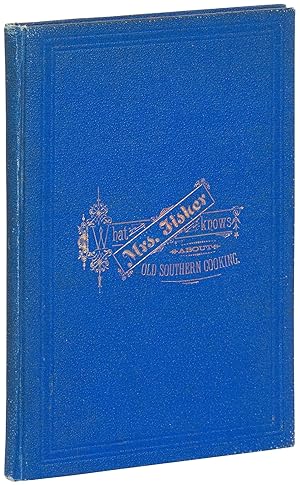
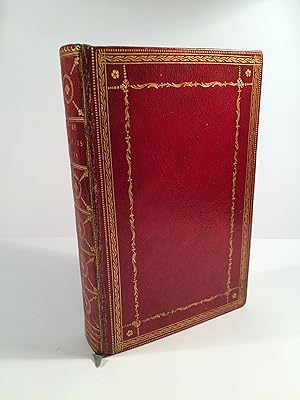
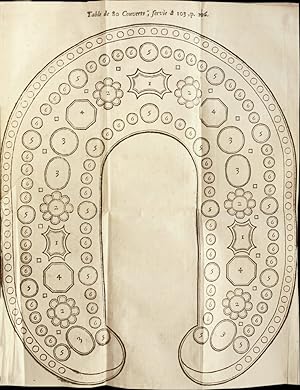
![Image du vendeur pour Voyage pittoresque en Californie et au Chili; Iles Malouines; - Terres Magellaniques; - Détroit de Magellan; - Terre-de-Feu; - Terre-des-États; - Cap-Horn; etc.; par M. Ch. de Lambertie, auteur de Maïna et d'Hermann. [.]. [Bound with:] Le drame de la Sonora, l'état de Sonora, M. le Comte de Raousset-Boulbon et M. Charles de Pindray, par M. Charles Lambertie, Auteur du Voyage pittoresque en Californie, au Chili, au Mexique, etc. (Oeuvres de M. Lambertie. Histoire et voyages.) mis en vente par Földvári Books](https://pictures.abebooks.com/inventory/md/md31573339727.jpg)
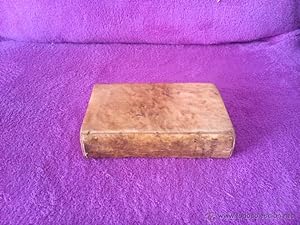
![Image du vendeur pour Les Diners de Gala [The Dali Cookbook] mis en vente par Manhattan Rare Book Company, ABAA, ILAB](https://pictures.abebooks.com/inventory/md/md31514140993.jpg)
![Image du vendeur pour [TRAVEL] [MANUSCRIPT] : A Tour Through Denmark, Sweden, Finland, to Petersburg from there through Prussia, Brunswick, Hanover and Holland in the Summer of 1835 mis en vente par Cleveland Book Company, ABAA](https://pictures.abebooks.com/inventory/md/md31192463903.jpg)
![Image du vendeur pour Opera di M. Bartolomeo Scappi, cuoco secreto di Papa Pio Quinto divisa in sei libri [bound with] Il Trinciante mis en vente par Pazzo Books](https://pictures.abebooks.com/inventory/md/md31695695990.jpg)
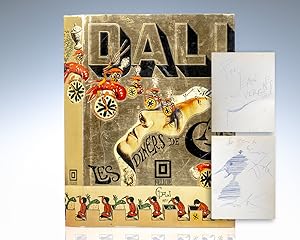
![Image du vendeur pour Gulf City Cook Book [Cookbook] [FIRST APPEARANCE OF JAMBALAYA] mis en vente par Babylon Revisited Rare Books](https://pictures.abebooks.com/inventory/md/md31810088168.jpg)
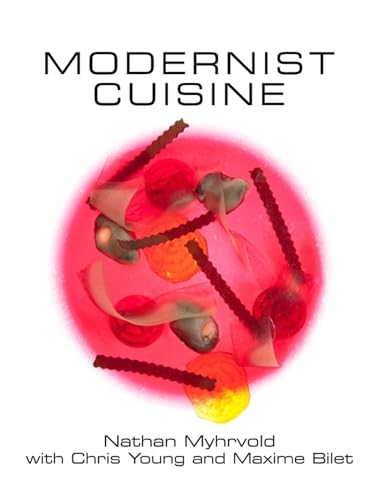
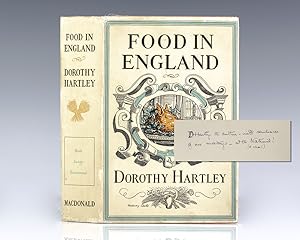
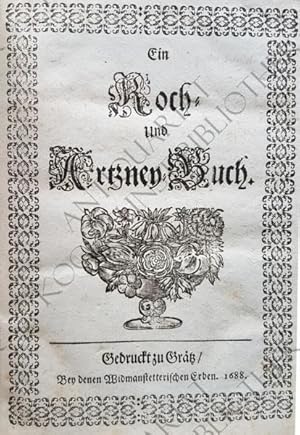
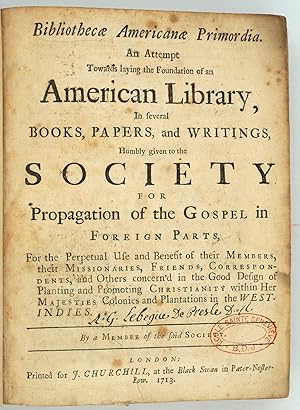
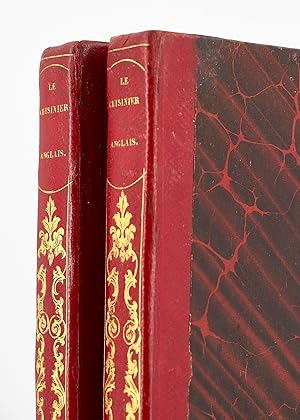
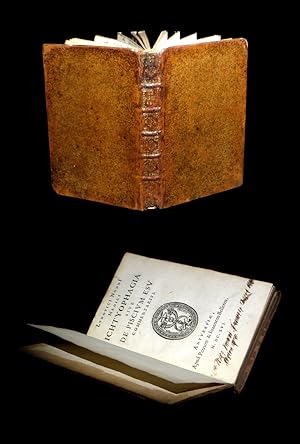

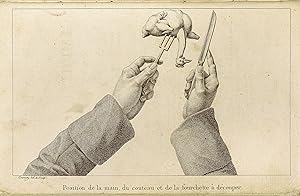
![Image du vendeur pour Les Soupers de la Cour ou L'Art de travailler toutes sortes d'alimens. 3 vols. - [ONE OF THE MOST IMPORTANT 18TH CENTURY FRENCH WORKS ON GASTRONOMY] mis en vente par Lynge & Søn ILAB-ABF](https://pictures.abebooks.com/inventory/md/md31744793922.jpg)
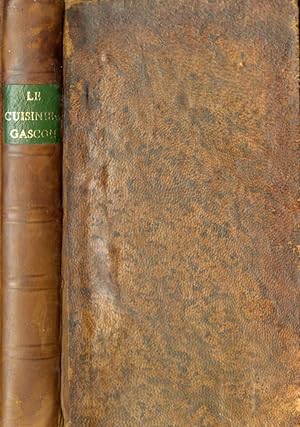
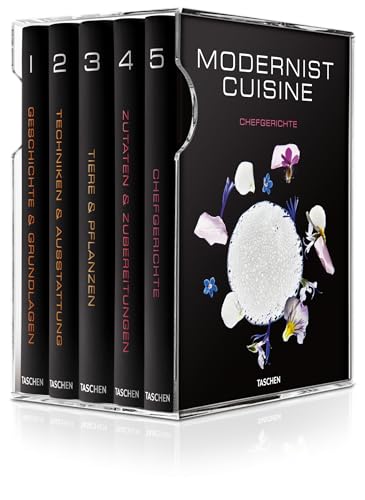
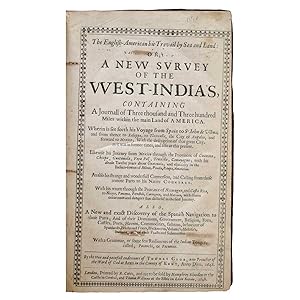
![Image du vendeur pour Melceü't-tabbahîn [The Chef's Refuge] mis en vente par Downtown Brown Books](https://pictures.abebooks.com/inventory/md/md31731864567.jpg)
![Image du vendeur pour Libri de re rustica M. Catonis, M. Terentii Varronis, M. Iunii Moderati Columelle, Palladii Rutilii : quorum summam pagina sequens indicabit [avec] Macrobii Aurelii Theodosii Viri consularis, in Somnium Scipionis M. Tulii Ciceronis Libri duo, Et Saturnaliorum Lib. VII. Cum scholiis & indicibus Ascensianis [avec] De die Natali. Censorini opusculum, de die natali, ad Q. Cerellium mis en vente par Librairie Le Feu Follet](https://pictures.abebooks.com/inventory/md/md14930469806.jpg)